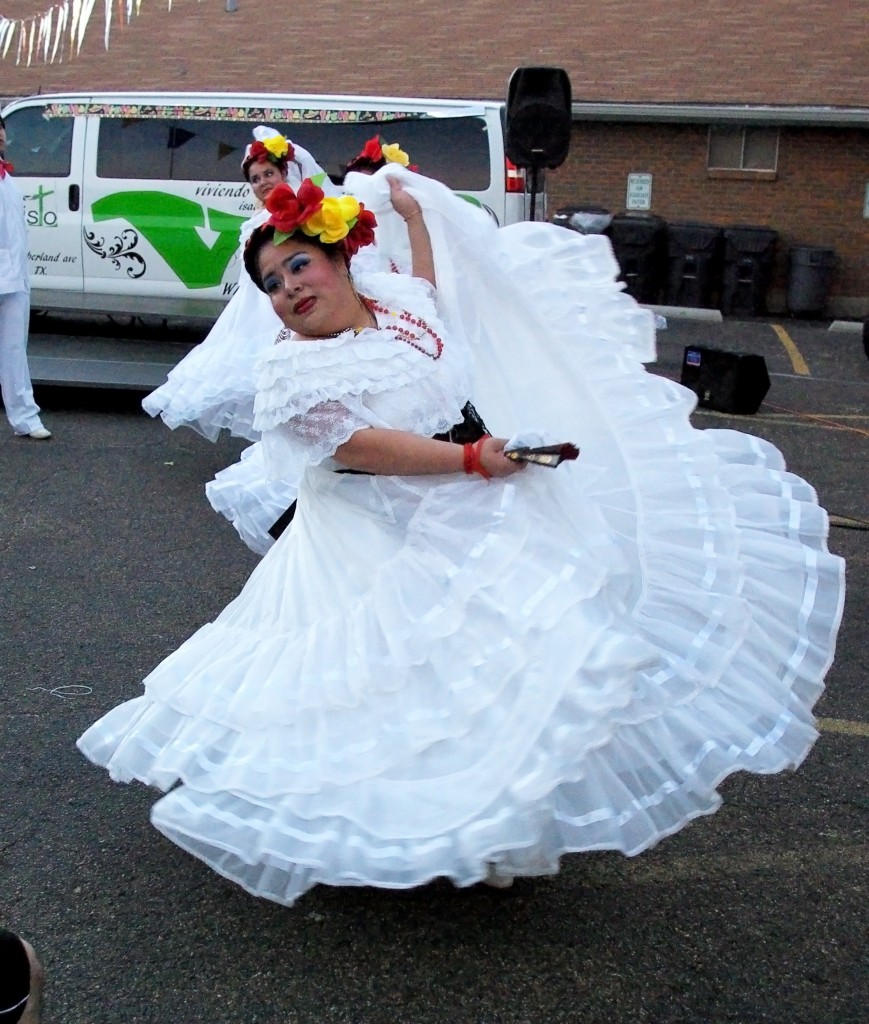Story and Photos by Mathieu Hodnett
With the swirl of each skirt and the tap of each foot the audience becomes more and more entranced by the dancers. The vibrant colors of the skirts come together into a rainbow that is as diverse as the various cultures the Ballet Folklorico in Waco represents. The organization’s variety of distinct costumes takes the audience on an adventure to the historic past of Mexico. In that exact moment the audience could be watching the intricate folklorico dance style from the state of Veracruz and become immersed in the culture.
There are many cultures throughout the globe that are distinctly different from one another. Not only are the cultures different, but also the way that the cultures are expressed through dance is contrasting. There are so many cultures, varying from Mexican, Vietnamese and Indian that all have distinct dancing styles. These diverse styles of dancing allow for each culture to share and  express the heritage of that culture to others in a community.
express the heritage of that culture to others in a community.
For traditional Indian dance, the style is focused on hand gestures and being solid as opposed to the more fluid and modern style of Bollywood dance.
Pearland junior Aliza Rahman, who is part of the Baylor Taal has learned a lot about traditional Indian dance in being a part of the Bollywood fusion organization. “For me I never had professional training. I learned a lot of things about the Bollywood side and classical side of Indian dance. So I learned classical dances, I learned classical hand movements and I learned different styles of Indian dance,” she says.
For the Vietnamese style of dance, the emphasis is not on a specific motion or hand movement. What sets this culture apart from others is that the Vietnamese style of dance is largely influenced by the use of props.
“It’s more about the props. We used umbrellas and rice hats in our last performance,” says Katy junior Brian Nguyen, the cultural chair for the Baylor Vietnamese Student Association.
Cultures can also have varying dances depending on which state or region they may be from. For example, different Mexican states have different costumes and dance styles depending on the region. One state may have more elaborate costumes and intricate steps opposed to another state.
“The different dances, and even down to the costumes, where in certain regions are a little more influential than others. Everything varies from state to state,” says Alicia Pesina of the Ballet Folklorico in Waco on the variety of dances among Mexican states.
Even though these cultures are distinctly different from one another stylistically, the passion to perform is one unifying trait.
Nguyen hopes that when the audience sees the Vietnamese Student Association perform, the group can share Vietnamese culture with the people who may have never seen it before.
“I want them to see how entertained we are doing the dance and how fun Vietnamese music is. Vietnam has a cool culture and it is also fun,” he says.
For the Ballet Folklorico group, sharing the vibrant Mexican culture with the audience is important to the organization.
“It’s something that’s unique, not only to our culture, but people come from all walks of life and see this and are like woah,” Pesina said, “It blows their mind because they aren’t used to seeing stuff like that now because it’s such a traditional style of dance.”
Being a part of a cultural dance group can also bring someone closer to their culture. Rahman feels that by joining Baylor Taal she feels closer to her culture even though she is separate from her Indian community back in Houston while she’s in school.
“Being away from home and not being able to see my family does kind of separate that culture. Because I’m independent I have to worry about still being apart of something here similar to culture definitely makes me feel at home,” Rahman says.
Even though organizing and choreographing for these cultural dance groups are a serious amount of work, the results are worth it.
“It’s definitely a lot of work to keep traditions alive, but we want the audience to take away the fact that our culture is very colorful and still has a lot to offer. And there is still a lot people can learn about it,” Pesina says.

